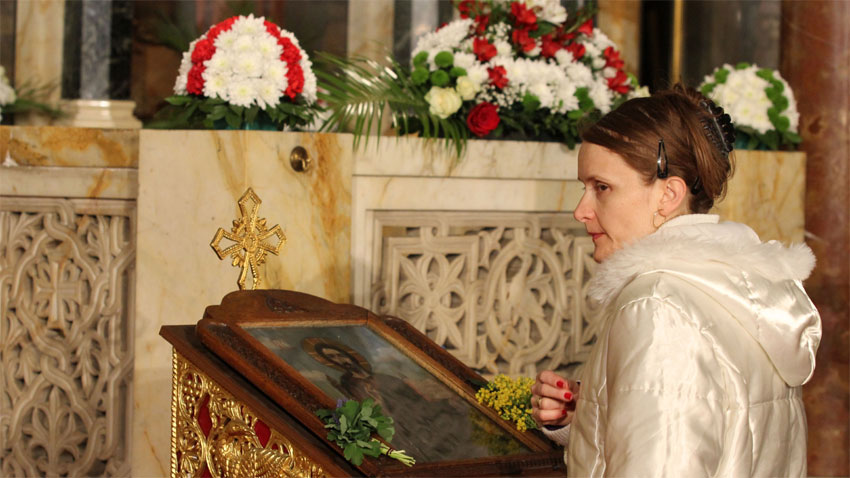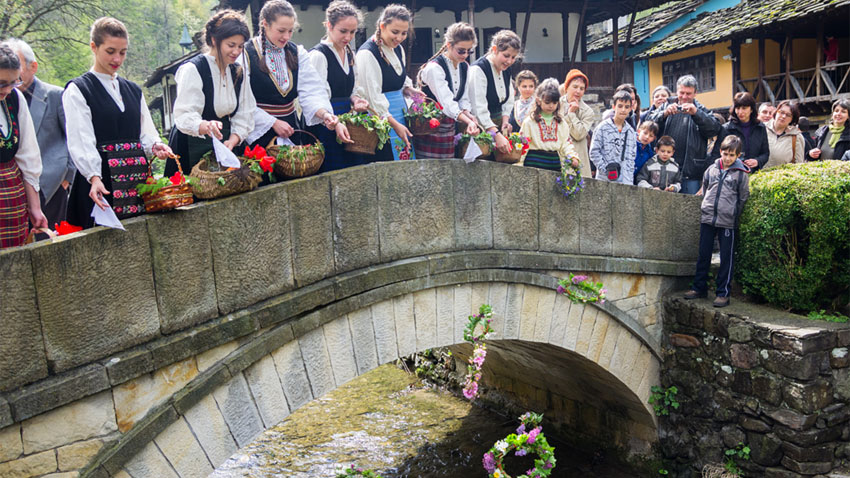Day after Lazarus Saturday and a week before Easter, Palm Sunday (“Tsvetnitsa”) comes - a spring holiday, devoted to reviving nature and its life-giving power. In the church calendar, this holiday is dedicated to the entrance of Christ in Jerusalem, where He was welcomed with laurel and olive branches, days before being crucified. The day is marked by Orthodox, Catholic and Protestant Chirstians.

In Bulgaria it is also called Vrubnitza, Flower Sunday, Kuklinden. Traditionally, in the morning, there is a festive church service, from which people leave carrying blessed willow branches, geranium and flowers that they place in front of an icon in home and atthe front door. In the past they used to keep the willow branch because of the belief in the powers of the twig to protect against diseases and disasters. In the spring and summer, when a storm came, people brought the wreath in the yard and looked through it to the clouds, with the hope that skies would clear. People also believed lighting part of the twig would prevent thunderstorms. Holding a willow stick taken from the church, people took cows to their first spring grazing in order for them to be healthy.
Special loaves of bread are bakedonVrabnica, which are part of bride rituals. Folk rituals end with the custom of “lazaruvane”. In the morning young brides as well as unmarried girls bring wreaths of willow twigs, flowers, and little loaves of bread, called “kukla”. The girls put the ritual objects in the river and watch whose wreath or bread will be the fastest and taken further by the flow of water. The winner enjoys special attention from the others.
The Lents are not over, but because of the significance of the day, fish is allowed to be consumed. The tradition does not allow people to dance “horo,” that has the chain of people closed and forming a circle. Only “Buenek” is danced – a lively open horo dance, accompanied by a song. People dance to the right and the chain is led by a young woman.

Today the holiday continues to be celebrated throughout the country. Willow twigs and flowers decorate homes and churches. Most festive is the mood in the homes of the great number of people bearing a name of a flower, a tree, or a plant.
English: Alexander Markov
Photos: archiveThe Philip Koutev National School of Folk Arts is not just any school - it is a talent laboratory. It is the first school not only in Bulgaria but in the Balkans for professional study of folklore. It is located in the heart of the beautiful town of..
Scientists from the Sorbonne will study the cultural heritage preserved in the Regional Ethnographic Open-Air Museum "Etar" , informs public broadcaster BNT. In March this year the French scientists together with experts of REOM "Etar" will study elements..
The day of St. Tryphon (1 February old style, 14 February new style) is celebrated by vine growers, falconers and gardeners in Bulgaria. Trifon Zarezan comes around with vine pruning and wine drinking St. Tryphon is believed to help..

+359 2 9336 661
